#representation of what cypress is Supposed to be
Explore tagged Tumblr posts
Text
comparing my selfships again but i think cychoro awre probably much more insatiable than zarahjiwoon... i dont know.. the dynamics are similar but simply as People cychoro are much less Fulfilled by wehat theyre doing in general. so on and so forth
#maybe insatiable isnt the right word. at the same time it is#definitely very unfulfilled as people . but also theyre probably more active in that sense as well as a result? cause they're just#technically . just normal people#and zarah +jiwoon are just both. extremely mentally ill for one.#theyre sated by being good at what they do and like. also killing people but we can ignore that for now#versus choro and cy#ososan verse zarah doesnt have the same like . Elevation per say i guess but she's still like#representation of what cypress is Supposed to be#and cy knows she really can't be the same#even if theyre very similar theyre still different people#...........theres also . the aspect of it beign far much harder for zarah to grow comfortable with jiwoon vs cypress and choro#..cy's proibably way more forward too#uhmmm wehatever. runs off to draw gay shit or whatever#txt
2 notes
·
View notes
Text

DEAR, MR/MS. ( CYRUS MIN )
We are pleased to have you back for another year as a SEVENTH YEAR STUDENT at Hogwarts School of Witchcraft and Wizardry. We sincerely hope your classmates in SLYTHERIN treat you well.
Cyrus Min. His name might spark some memory for those who were old enough then, but he’s one of the two sole survivors from a magical accident during their respective jobs as Potioneers that leaves both children parentless. Raised by his older sister, Cypress, he learns the best from her. And the worst. There are many fragments of her that he sees in the slivers of the mirror. They are the survivor.
He sees the other children, the one who resent and do not appreciate their parents, and it makes Cyrus sick. There is a sense of not knowing what you have until its gone, he supposes. But at the same instance, it’s simply what his upbringing is. Others complain there is no freedom, where Cyrus wishes for guidance. There is some warmth that an older sister cannot provide in place of a parent’s care. The younger of the pair does not ever blame her. After all, she has her own life to live, and her own goals, wishes, aspirations, and the world does not stop to tend to Cyrus.
There are many moments where he wonders about the theories, how different life could be if his family was around. But no time in moping. The siblings learned that they had to make a name for themselves, and not only live off of their parent’s inheritance. When he enrolls into Hogwarts, he’s rather shocked that he was welcomed into the green arms of Slytherin’s robes but it becomes his new life.
The things he dedicates himself most to are his studies, and his friends. Growing up was rather solitary, and honestly, he’d probably be one of the first ones to throw a punch or a spell if it meant defending one of his closest friends. But he’s also learned that it’s not the worst thing in the world to be close to those in other houses either. Any friend is welcome- as long as they did not spurn him once. Once the trust is gone, Cyrus finds it immensely difficult to reprogram himself into rebuilding bonds. It’s one of the most sacred things to him.
The times he likes the least are when he has to leave Hogwarts. Honestly, there is no doubt in his mind that sometimes, the summers are the loneliest because his sister is rarely home any longer, and he knows that once she becomes employed, the two will live separate lives. Where she zigged, he zagged, and Cyrus knew that they would not be going in the same direction.
He will then be truly alone.
So his first focus is always going to be himself. At the end of the day, there is no one else that Cyrus can envision being there for him, and when the world turns upside down, he will still be standing. And he feels as if he is a true representation of his family name. Where his sister strayed, he remained to the crafting in his blood - his excelling in Potions has him eager to continue his education after 7th year. He cannot see himself anywhere else.
1 note
·
View note
Photo

For the week of 13 November 2017
Quick Bits:
Babyteeth #6 opens the floodgates of story after getting through the initial hurdle of getting Sadie and Clark out of imminent danger. Donny Cates gives us more depth as to what’s going on broader picture of the world and introduces us to the cult geared to protecting and raising Clark.
| Published by AfterShock



Black Science #33 has the shit hit the fan as the confrontation between Grant and Kadir reaches its peak and then reality breaks. The mix of mad science and philosophy from Rick Remender on display here is wonderful, seeing a representation of Platonic ideals mapped onto quantum realities in a kind of unfurling of Gnostic cosmology is impressive. So too is Matteo Scalera’s art. He and Moreno Diniso really get to cut loose this issue and it looks wonderful.
| Published by Image / Giant Generator

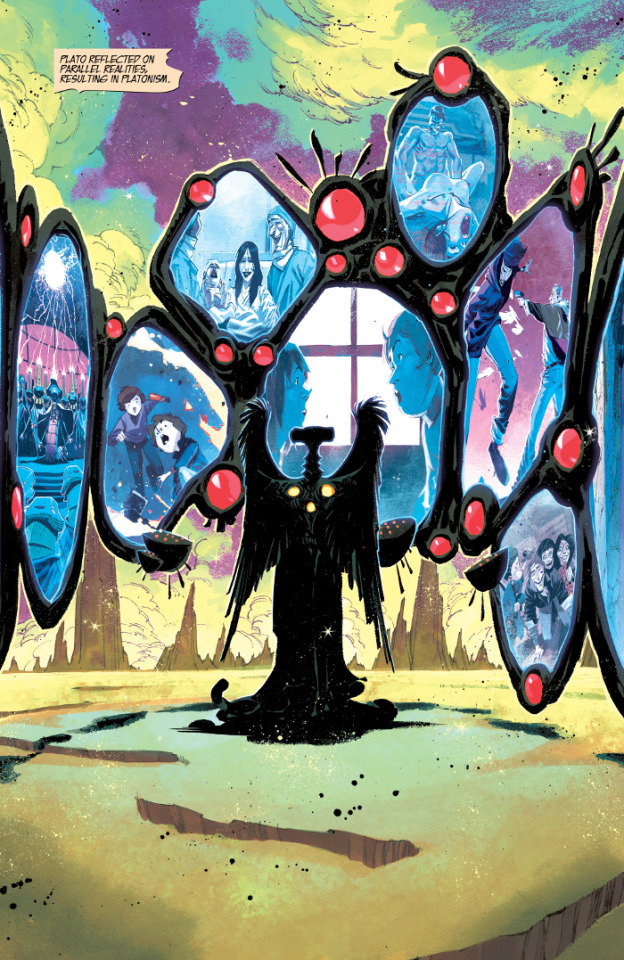

Bloodshot Salvation #3 gives a revelation to the “soon” timeline of what’s happened to Ray, while in the “now” we get a confrontation between Ray and Daddy, Colin King helping out Magic, and Project Omen causing complications. I probably sound like a broken record, but Jeff Lemire, Lewis LaRosa, and Mico Suayan are doing some great things with this series.
| Published by Valiant

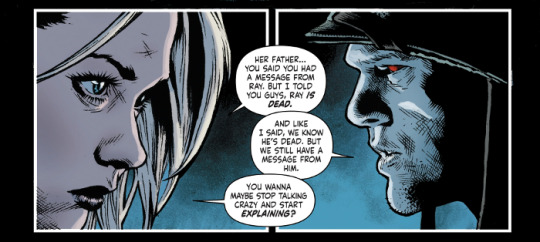

Brilliant Trash #1 is an interesting take on superheroes. It’s a mix of government conspiracy and potentially mad science, told from the perspective of a journalist looking for a story in the appearance of a V-like figure, Lady Lastword’s, final speech and death. Tim Seely’s got something interesting here. Priscilla Petraites’ art is also quite nice, kind of a mix between Jamie McKelvie and Phil Hester.
| Published by AfterShock

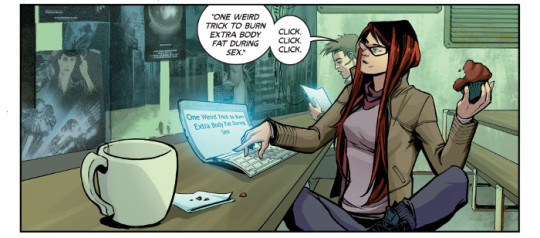

Dark Fang #1 continues the trend of not naming the protagonist in the body of the first issue. The solicitation copy and end piece are what’s needed to piece together the full premise of the series and name of the protagonist. That said, Miles Gunter does have a decent story here. It’s environmentalism through the lens of a centenarian vampire, Valla, who was friends with a fish until modern industry destroyed her ecosystem. But first, earning money as a cam girl and getting caught up in society’s obsession with cell phones and the internet. The art from Kelsey Shannon is a definite plus.
| Published by Image



Deadpool vs. Old Man Logan #2 is every bit as fun, humorous, and action-packed as the first issue. Declan Shalvey has a great feel for both Wade and Logan and Mike Henderson’s art is truly wonderful. Only two issues in and this is just a fun, must-have wild ride.
| Published by Marvel

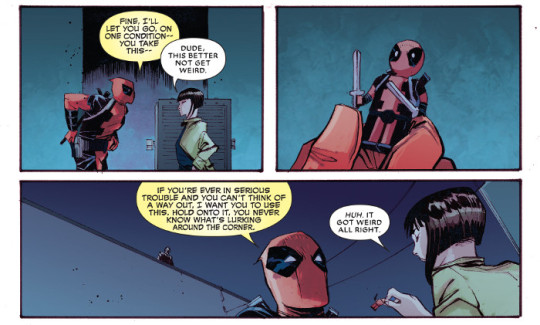

Evolution #1 is a very strong debut issue with multiple voices brought together by the singular visuals of Joe Infurnari. Infurnari has a style that is a bit Tom Mandrake and a bit Bill Sienkiewicz and it is absolutely perfect. If you like David Cronenberg’s early horror films, even just a little bit, you owe it to yourself to at least check this out.
| Published by Image / Skybound

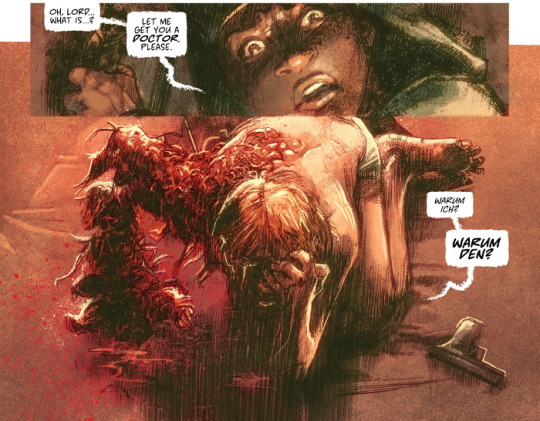

The Family Trade #2 continues Jessa’s investigations into Berghardt and Mikkaelsen despite the protestation and outright prohibition by her Family. Her technique of getting close by blending in as a simple cleaning woman is a nice touch. The end, though, suffers a bit in who exactly Jessa is speaking to. I think it’s supposed to be her uncle, but I’m not sure.
| Published by Image

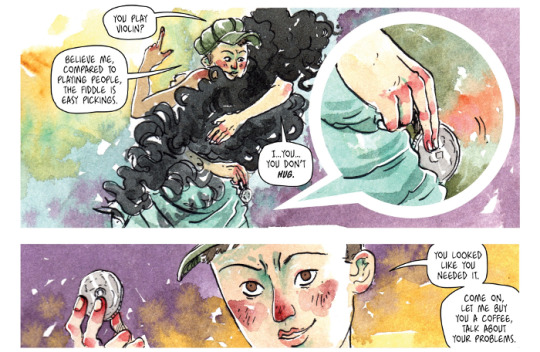

Fence #1 gives me the impression that everyone, even the protagonist, involved in competitive fencing is an asshole. That’s not necessarily a good impression of the sport, and gives a poor outlook on who to “cheer” for in the endeavour, but it may be an accurate depiction. Especially since many sports seem to be populated by jerks.
| Published by BOOM! Entertainment / Boom! Box



Generation Gone #5 is a suitably insane conclusion to the first arc of this series. It’s violent, angry, and explosive - kind of like how you’d expect kids to react when they find out that the world is designed to see them fail. André Lima Araújo’s art has just been fantastic on this series.
| Published by Image

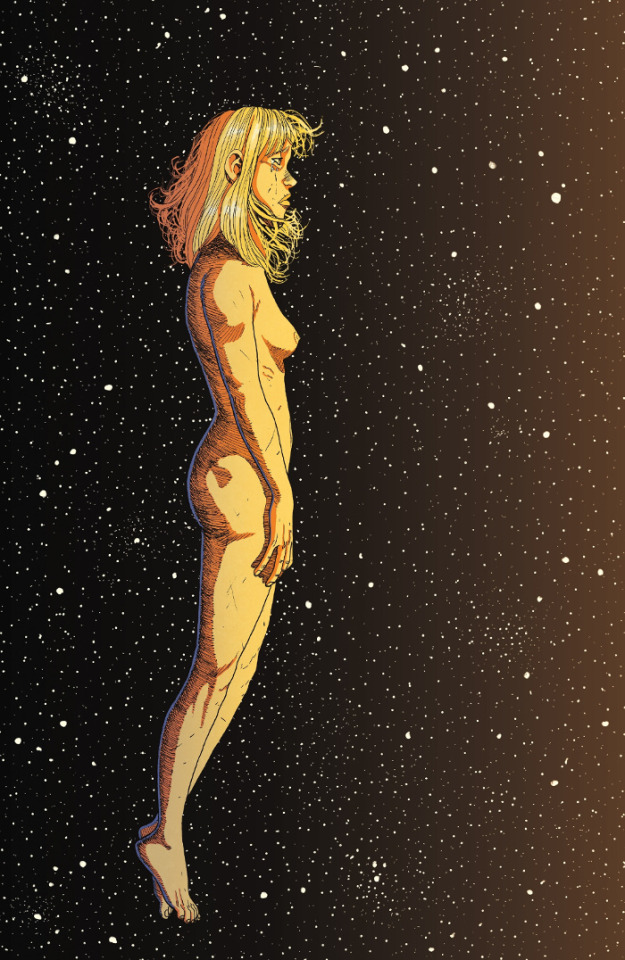

Hawkeye #12 is a team-up issue between Kate and Laura (All-New Wolverine) with Gabby and Jonathan in tow as well, illustrated by guest artist Michael Walsh who is easily proving he’s a force to contend with. This issue looks great and is fun as hell.
| Published by Marvel



Jenny Finn #1 now in colour. If you haven’t read this masterpiece of Lovecraftian lit from Mike Mignola and Troy Nixey before, now’s a good time to do so. If you have, especially since this has been reprinted and repackaged a few times before, you’ll have to decide whether or not you want Dave Stewart’s colour. There was something to be said for the original black and white, although the colour version’s not bad.
| Published by Dark Horse

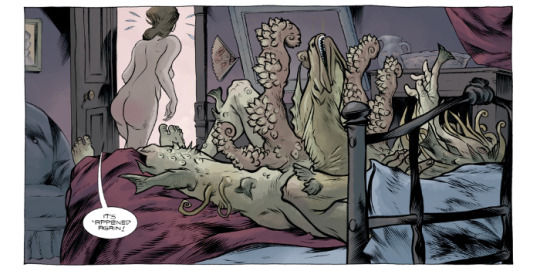

Kill the Minotaur #6 is both an expected and unexpected conclusion to the series. Ariadne and Theseus’ confrontation of the Minotaur is suitably epic. I can’t say much more than that because they’d be massive spoilers, so enjoy this amazing artwork from Lukas Ketner.
| Published by Image / Skybound



Killer Instinct #2 does what I was afraid the first issue was going to do and dumps a lot of characters with intricate backstories from the game on us in one go. Where the first issue mainly focused on one character to ease us into the world, this issue gives us more of the Coven, a bunch of characters fighting over the Killer Instinct Tournament, and Jago. While the Jago and Tsar bits are fairly well executed, the central bit over Ultratech is a bit of sludge. As I said in response to the first issue, I’ve never played the game and know little about the world, so this felt a bit like being dropped right in the deep end. The art from Cam Adams is still nice, though.
| Published by Dynamite



Maestros #2 quickly installs Will as the new Maestro and he begins making sweeping changes to the multiverse’s society, trying to bring concepts like equality and freedom to a world that only seems to know subjugation under magical will. It’s an interesting exploration of sociopolitical ideas from Steve Skroce and naturally it brings about severe pushback from those previously in charge. And betrayal.
| Published by Image



Mech Cadet Yu #4 features the cadets first full on confrontation with the Sharg and it’s about as exciting as you would expect. Takeshi Miyazawa’s art is just wonderful and it’s really nice to see Yu thinking on his feet during the battle to ensure the continued survival of the entire team.
| Published by BOOM! Studios



Minky Woodcock: The Girl Who Handcuffed Houdini #1 is interesting. The relationship between Harry Houdini and Sir Arthur Conan Doyle has certainly been in the zeitgeist lately, this one doing something different and focusing on the end of Houdini’s career, long since the two had their falling out. Cynthia von Buhler sets up Minky looking into Houdini debunking spiritualists at the request of Doyle fairly well, but the main enticement is von Buhler’s art. She has a style that reminds me a bit of Melinda Gebbie and it works incredibly well for the smoky, pulpy atmosphere of the story.
| Published by Titan / Hard Case Crime

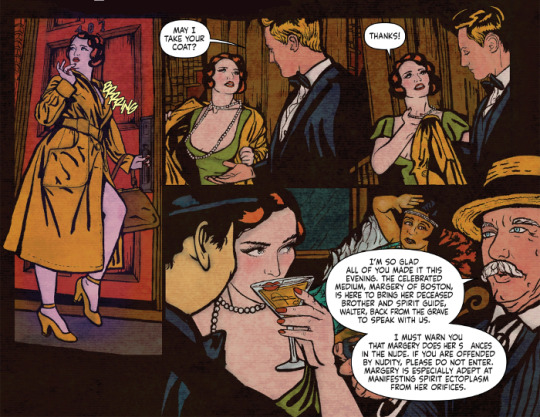

Misfit City #7 lines up the dominoes in this penultimate issue. Overall this has been a great series and I’m excited to see how it ends. That being said, I wish there were more. The world needs more girl adventurer books and this one has been excellent.
| Published by BOOM! Entertainment / Boom! Box

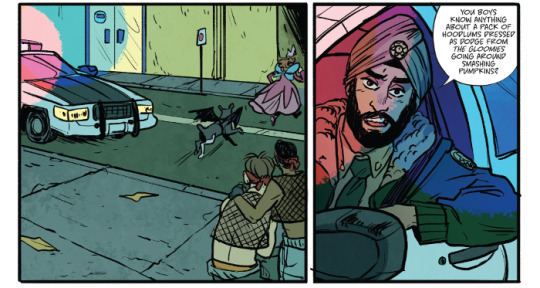

Ninja-K #1 is a damn fine new direction for Colin King, looking deep into the past of the Programme, dealing with the history of Ninjas A through L, and putting forth a mystery as to who killed Ninja-D and appears to be targeting the other remaining operatives. Christos Gage gives us a compelling mix of mystery and spy thriller that’s only topped by Tomás Giorello’s incredible artwork. Damn fine work.
| Published by Valiant



Rasputin: The Voice of the Dragon #1 begins another pre-Hellboy, pre-BPRD series tying numerous disparate threads together and giving more backstory on the world. This first issue focuses more on Trevor Bruttenholm tracking down a decrypted Nazi message, but it could be about a talking head describing how to prepare an avocado because Christopher Mitten makes everything look amazing. Thankfully, though, the story isn’t bad either.
| Published by Dark Horse

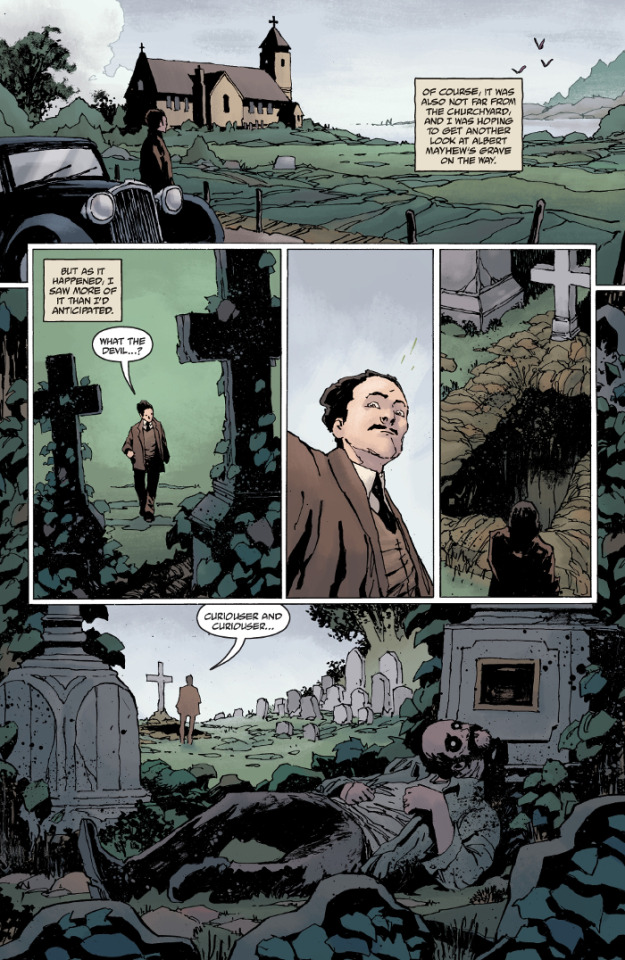

The Realm #3 reveals some chinks in the baddies’ armour as strong personalities clash. The artwork from Jeremy Haun is again one of the main drawing factors. This series just looks great.
| Published by Image



Retcon #3 finally gets around to the premise that Matt Nixon and Toby Cypress were on about in the interview in the first issue. I’m thinking maybe for a storytelling point, they should have led with this, but it does give the series a better cohesion and purpose. This was the make or break issue for me and Crowley ripped from time to tattoo a baby won me over.
| Published by Image



Star Wars: Darth Vader #8 continues Jocasta Nu’s infiltration of the Jedi Archive to retrieve an artifact from under the nose of the Grand Inquisitor. This issue gets a little...explosive.
| Published by Marvel



Star Wars: Doctor Aphra #14 is Emilio Laiso’s debut on the comic and the artwork looks gorgeous. He did a great job on the Rogue One adaptation and it’s nice to see him back on a Star Wars title. Even if I’m going to miss the hell out of Kev Walker’s art.
| Published by Marvel

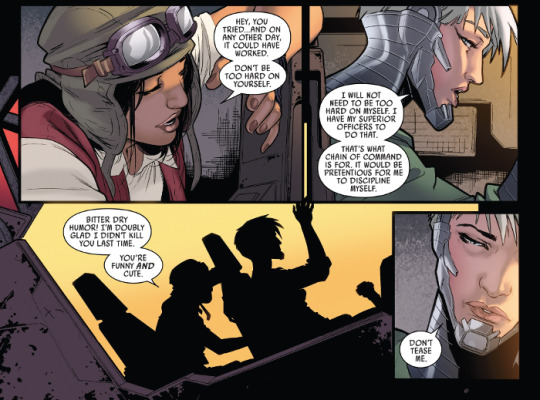

Teenage Mutant Ninja Turtles #76 allows no rest for the turtles as they return home from Dimension X, also after the brief excursion with the Ghostbusters. Damian Courciero looks like he’s handling the art chores for this arc and it’s a welcome addition. He has a darker, somewhat more realistic style and it suits the chaos and destruction going on with the Earth Protection Force’s first contact with the Triceratons.
| Published by IDW

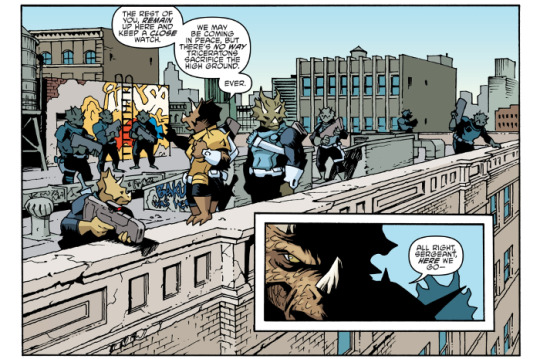

Unholy Grail #4 continues this dark and twisted retelling of the Arthurian legend. Part of what really works about this series, though, is that it really isn’t that far removed from the other stories of glorious knights and magic, just given a different context,
| Published by AfterShock



Other Highlights: Adrift, Alien Bounty Hunter #2, Amazing Spider-Man #791, Ben Reilly: Scarlet Spider #10, Bolivar, Champions #14, Curse Words #10, Defenders #7, Descender #26, Doctor Strange #381, Dreadful Beauty: The Art of Providence, East of West #33, Guardians of the Galaxy #147, Horizon #16, Incidentals #4, Incredible Hulk #710, James Bond: Kill Chain #5, Mage: The Hero Denied #4, Mighty Thor #701, Not Brand Echh #14, Peter Parker: The Spectacular Spider-Man #297, Postal #24, Punisher #218, Ringside #13, Secret Warriors #8, Sheena: Queen of the Jungle #3, TMNT/Ghostbusters 2 #3, The Wicked & The Divine #33, X-Men Blue #15, Zojaqan #2
Recommended Collections: Ab Irato, Goldie Vance - Volume 3, James Bond - Volume 1: Vargr, Journey to Star Wars: The Last Jedi - Star Wars: Captain Phasma, Luke Cage - Volume 1: Sins of the Father, Nancy Drew & The Hardy Boys: The Big Lie, Regression - Volume 1: Way Down Deep, Rough Riders - Volume 2: Riders on the Storm, Star Wars: Poe Dameron - Volume 3: Legends Lost, World Reader - Volume 1

d. emerson eddy knows that evolution is a mystery, full of change that no one sees. He sees the line in the sand.
3 notes
·
View notes
Text
Quartermaster Isildur informs clan leader Aridatha that a surplus of resources begins to exceed the available storage space, and suggests increasing the clan’s exports as a possible solution.
“There is, I fear, one problem,” Isildur said, carefully marshaling her sheaf of notes, precise and delicately-formed numbers that detailed the clan’s input and output of nearly every material imaginable. Delemont’s hunting, Zura’s gathering, Luna’s beastclan ransoms, Illyan’s printing supplies, Zarya’s bones, Bartos’ library, Barholme’s crystals: all found their quantitative representation amongst Isildur’s records.
“Are we running low on supplies?” Aridatha said. She could hardly imagine it, since she could see the sprawling hoard building from her own windows, but perhaps there had been some shortage among the minutiae that she hadn’t picked up on.
“No. Quite the opposite, in fact.” Isildur turned her delicate head to gaze out the window at her own domain, the aforementioned hoard. “We possess considerable surpluses of many resources. So much so that they are beginning to occupy more space than can be justified by their utility. I believe the problem is becoming particularly acute when it comes to housing the living creatures we have captured, though that is not strictly my department.”
“Geras did mention something along those lines.” Aridatha sighed. “Do you have any suggestions?”
“Trade would seem the obvious solution,” Isildur said. Aridatha gave the skydancer a wary look – had that been an insult? Aridatha was a busy dragon; she could not be expected to think of everything, or, frankly, to even devote thought to everything when she had a perfectly good deputy to think of plans for her … Neither could she waste energy on such a petty slight, though. “While we are hardly starving for funds, it will do no harm to convert some of our excess into ready cash. The only difficulty is transportation: for all the advantages it holds, this lair is rather geographically remote.”
Aridatha nodded. “So we need to put together a trading expedition. I can call up Rakgi, or Lailyn or Wanderer …”
Her voice trailed off as she considered the unsuitable traits of each of those candidates. Rakgi had made market runs before, and he had never proven a very savvy bargainer; under his supervision, they’d be lucky to get half the value of their merchandise. Wanderer and Lailyn would do better on that front, but the former was untrustworthy and might very well keep the earnings for himself – or squander them on foolish amusements before he returned. While Lailyn lacked these egregious faults, she was an ornery skydancer – getting her to accept the role would take some effort, considerable coaxing.
“Maybe Moros would be amenable?” Aridatha wondered aloud. She didn’t know the older ridgeback very well; Moros had lain low ever since the shameful revelation that she’d shirked her duty to aid in moving the hoard during the clan’s transition to their new lair. Truly, the best thing Aridatha could say of Moros was that she had not recently caused any trouble, though she had heard stories from before her tenure … But maybe she would welcome the chance to make up for her earlier lapse.
“That is not precisely what I had in mind,” Isildur said. “Quite apart from any questions of … individual qualifications, I envisioned a rather more regular and permanent arrangements.”
Aridatha waited for the quartermaster to continue, and she did not. Looking the skydancer in the eye, Aridatha sighed again, rather more meaningfully this time. Why was everyone in this clan so Shade-cursed dramatic? “I’m not going to ask you what your plan is, Isildur.”
“In a way, you just did,” Isildur said, smirking slightly.
“Spare me the semantics.”
Isildur opened her mouth, examined Aridatha’s expression, closed it, tilted her head, and after a moment’s silence finally said, “Rather than push the job off on whichever unskilled clan members happen to be available, I would propose that we add a specialized, experienced trader to our clan’s workforce.”
Aridatha considered the suggestion for a few seconds. “That does leave us with the problem of recruiting such an individual.”
“I have some leads,” Isildur said. “I am aware of a few nomadic merchants currently passing through our area; it would not be difficult to contact them and see if any of them are interested in a more permanent gig. And, of course, there’s Frip. I have not raised the subject with her, but somehow I am certain that she has advice to offer.”
Of course: nothing happened in this clan that Frip didn’t know about and insinuate herself into.
“If no suitable candidates present themselves locally, we could always mount an expedition to a central market with an eye towards crafting such a partnership.”
“Very well,” Aridatha said. “It sounds like you have a handle on this. Can I expect you to do this contacting and Frip-asking? Let me know when you have some potential newcomers lined up.”
Isildur’s face constricted in a slight frown. “I suppose this would not be an opportune time to mention that I myself have been considering a change of employment?”
“What do you mean?”
“Cypress and Illyan’s literary project intrigues me.” Isildur picked carefully through her notes until she found evidence of that project: the as yet highly provisional newspaper. Aridatha had not kept the closest eye on it, except to scrutinize Illyan’s requests for supplies, but it seemed to be in the throes of huge design overhauls – sometimes several a day. “They would benefit immensely from conscientious oversight from someone with a firm grip of syntax.”
“You’d leave the hoard unmanaged? To devolve back into its prior state?”
As transparent as it was, the appeal to Isildur’s fastidious nature worked: the skydancer grimaced. “No. I … will remain at my current post as long as the clan needs me. But I hope you will not mind if I endeavor to find a successor as well as a new coworker.”
Aridatha nodded. “That seems reasonable. Keep me informed, all right?”
“Of course.” Isildur was intelligent enough to recognize this as a dismissal, and she departed, taking her notes with her.
3 notes
·
View notes
Text
The Koan Q & A
Q: What is the basic purpose of koans?
A: Mainly to put a stop to representational thinking.
Q: Just what exactly do you mean by representational thinking?
A: Basically, representational thinking deals with the habitual use of mental images at a very subtle level. The major problem with such thinking is that we believe it matches the object it tries to represent. But it doesn't. From a Buddhist standpoint, no representation can match our Buddha-nature. And as long as we try to visualize this nature, we are just going to run around in circles.
Q: If I am given a koan, then, I am expected to perceive what is not a mental image--breaking my habit of representational thinking--right?
A: Yes...that's right. But surmounting such thinking, especially for us moderns, is really difficult. Often, we fail to arrive at the limit of representational thinking. Some even go so far as to represent non-representational thinking! Talk about delusion!
Q: Could you explain how all this pertains to the "Mu" koan about whether or not a dog has the Buddha-nature?
A: As you know Joshu replied to the question with "Mu", meaning "No". This came as a shock to the questioner who believed that all sentient beings, including a dog, have the potential to realize Buddhahood in the future. In regard to the koan exercise, itself, as laid out by Chinese Zen master Ta-hui, Joshu's "Mu" is called a *hua-wei* meaning "word-tail". For the practitioner thinking "Mu" in his mind's eye, it is merely a hua-wei, being no more than a mental image, or more precisely, a mental sound. In the exercise, itself, hua-wei chiefly refers to representational thinking. "Mu", let us say, is the grand representation of all! Imagine, then, trying to transcend "Mu", seeing the *pure antecedentness* of the hua-wei called the *hau-t'ou*, meaning 'ante-word'. But that is what we have to do. Basically, this means to look at the suchness which comes prior to the arising of Mu in our mind's eye. If we look correctly, we will see the first trace of Buddha Mind, understanding that the myriad of things issue from this abode which is free of mental images.
Q: Are you saying that the "Mu" I intone in my mind comes from Buddha Mind which cannot be intoned or seen?
A: Yes. However, most people are so addicted to representational thinking that they are unable to see anything besides the hua-wei side, in this case, the imagined "Mu" which is not the same as the real antecedent "Mu". Continuing this way, they will never get a glimpse of Buddha Mind. I should say, to actually merge with the hua-t'ou of "Mu" proves a great event if it is actually accomplished. But most practitioners never do it.
Q: Why is that?
A: It is because most people believe in the seen rather than the unseen. In the world of mental constructs, we have been led to believe that the source of thoughts is nothing--it is a dream. We are taught to value thoughts, schemata, feelings, desires and so on. Never once have our cultural wise men encouraged us to investigate the true source of these images.
Q: When you saw the hua-t'ou--the "pure antecedentness" as you call it--what was it like?
A: I just saw *that* which was image-free. No matter what image came before my mind I could see its hau-t'ou. It was great! I can remember the next morning as I watched the sun rise over the eastern hills and saw its hau-t'ou and jumped for joy like a madman! Then, when I went in the woods to cut firewood, I even felt the hau-t'ou of sawing wood! Even when my old fears came up, I could see the hua-t'ou. Over the years as my practice deepened, I became more of the the hau-t'ou and less and less of the hua-wei. As this happened, more of the Buddha's teaching was revealed to me. Oh, let me say this before I forget--Zen practice really begins after we see the hau-t'ou, and not before.
Q: That is very interesting. So, there comes a point when you actually "see the hua-t'ou" of "Mu". Right?
A: Yes--exactly so. No "ifs" "ands" or "buts" about it. You see *that* which no image can represent. In addition, it is like a mysterious jewel which, if you turn to it, your existence becomes more complete over time. The more you look at it, the clearer your Buddha knowledge becomes.
Q: That seems easy enough. But what about bigger koans like Hyakujo's fox? I really have a difficult time with that one. How did Hyakujo's words "The enlightened man is one with causation" free the Zen master from further rebirth as a fox?
A: The teacher of Ta-hui, Zen master Yuan-wu, said, "Do not seek for anything within the meaning of the phrase". What he was stressing is that you must learn to hear clearly outside of the phrase in the example of "The enlightened man is one with causation". That is the hua-t'ou. Do you understand?
Q: Not exactly. I am familiar with a number of interpretations of that particular koan. Do you mean they are wrong and yours is right?
A: [laughing] No, only truth has the correct answer. But let me now get to the point. Teachers who engage in looking for the various meanings in koan phrases themselves, are off the track. If a thousand Zen masters have a thousand different interpretations of Hyakujo's answer, which one should we follow? These teachers are only investigating dead words. They should see the live word that comes before all words!
Q: So what is the "live word", as you say?
A: It is where the hau-t'ou is. Exactly there! It is the source of my tongue which not even the Buddha can find! [laughing]
Q: Well, I must admit that is a pretty good answer. In other words, I have to get beyond representational thinking, as you say, and stop trying to conceptualize. By the way, I have heard a lot about "doubt" in koan practice. What does it mean?
A: When the pioneer of the koan exercise, Yuan-wu, used the expression "doubt", he meant it to refer to obstacles which Zen practitioners must overcome. Basically, in Yuan-wu's use, it is what separates us from the truth.
Q: But I read somewhere that we are supposed to cultivate "great doubt".
A: Oh, that was Ta-hui's understanding of doubt who was Yuan-wu's successor. He said that "great doubt is followed by great enlightenment", or something to that effect.
Q: What is your assessment of the way koans are practiced today?
A: To be honest, not very good. It is much like Yuan-wu's time, in which everyone was stuck on interpreting koan phrases, which, ironically, koans were designed as an antidote against. It seems to me, that we haven't changed a bit. Today, the only difference is that teachers now are analyzing koans from various psychological perspectives. They treat koans as if they were psycho-social parables which, of course, they are not.
Q: Aren't there answer to koans?
A: Not in a mundane sense, although in Japanese Rinzai Zen there are pat answers. But this is like giving out pictures of cookies to stop hunger. Thankfully, some crazy Zen master in 1916 gave out the answers to Hakuin's koan system and spared us all pictures of cookies! By the way, he called such Zen "pseudo-Zen".
Q: Does that mean, therefore, there are no answers?
A: It was never the intention of Ta-hui, or his teacher, to give 'word answers' to koans, in the case of riddles. When you penetrate the hua't'ou of the phrase you will know the right spiritual answer. If I say, "Mu" or "Cypress tree in the courtyard", or put my shoes on my head--you will understand. If I say, "Buddha" or chant a mantra, it is the same answer. That comes from seeing the hua-t'ou.
Q: Basically, you're saying that the modern practice of the koan is incorrect--right?
A: I am not going to answer that one. [laughing] I am already in hot water for my views. That is what you get for trying to be true to the original. I guess that makes me an old conservative Zennist!
Q: Well, you have to admit that what you have said so far, is not found in today's Zen books. To be honest, is your version traditional?
A: Of course, my account is traditional. On the other hand, today's so-called Zen books are, for the most part, the machinations of Pop Zennists who don't have the slightest inkling of how koans work. Basically, on this issue, Zen is divided into two camps, viz., those who wish to go beyond representational thinking and those who are using koans as a vehicle for psychological problem solving.
Q: What do you say when teachers tell their students that their own life is a koan?
A: You mean Dogen's idea? I say that they are looking in the wrong direction. Life is samsara--it never gets anywhere.
Q: Then, you don't think our life has any ultimate meaning?
A: What has ultimate meaning is the deathless hua-t'ou. In contrast with that, our body is a walking corpse looking for a grave. Yet, despite this dismal outlook, each of us has the capacity to harmonize with Buddha-nature, and by harmonizing with it, attain eternal life. After that, we will be like a swan, taking flight from a smelly old lake, flying to heaven.
Q: So, koans help us reach heaven? I can't believe that.
A: Koans help us see the immortal. By the way, I was using a metaphor from the Dhammapada. Yes, the Buddha talks about "swans" and "heaven". Sorry to rain on your parade! [laughing]
Q: It is going to take me a while to digest what you have said. For some who have spent years in study with a teacher, your words are depressing. In effect, you are suggesting that my Zen is not Zen because my answers dealt with psychological issues.
A: If I am suggesting anything it is this: China once greatly valued spirit. When the great Chinese mind developed Ch'an (Zen) it was for the purpose of spiritual transcendence--not learning how to cope with everyday life and the kids. In other words, there was only super swan flying Zen! [laughing]
Q: If Zen can't deal with common everyday issues, how can it be any good?
A: The problems people face today are not spiritual problems, but problems of desire and excess. In this regard, not even a Sage can be of any benefit. Only nature and Fate can deal with such people, teaching them their hard lessons. Spirit, on the other hand, says that if you want true happiness, leave your madhouse behind and move towards a higher level of being. The koan helps us do that.
Q: Does answering a koan correctly make one a Buddha?
A: Absolutely not. The answer only points you in the right direction. You just see a little bit of our Mr. Buddha! The insight still has to be cultivated until you manifest the state of Bodhisattva. After you become a Bodhisattva, a whole new practice evolves. Koans, after that, are like reading children's books.
Q: Does that explain why the Bodhisattva path is not mentioned very much in Zen?
A: I think so. But I should point out in Zen's beginnings, uncovered in old Tibetan manuscripts, there were roughly four kinds of Zen, viz., Gradual Zen, Sudden Zen, Mahayoga and Tathagata Zen. Mahayoga was basically the Bodhisattva path which lead to Tathagata Zen. What I think has happened now, is that Mahayoga and Tathagata Zen have been replaced by Sudden Zen. The higher forms of Zen, namely, Mahayoga and Tathagata Zen remained in Tibet and were subsequently absorbed.
Q: That is fascinating. I hope I haven't taken up too much of your time.
A: That's okay. I am glad to share my thoughts with you.
Text by Zenmar, the Dark Zen mystic
The Manual of Dark Zen – FREE BOOK GET YOUR COPY
0 notes
Link
IF YOU TAKE a few hours to read through one of Inger Christensen’s book-length masterpieces, there will come a point when you too feel as though you are standing inside a poem, even if you happen to be sitting. Maybe you feel this way because the poem in your hand has persuaded you that it is somehow both a precise and infinitely suggestive microcosm of existence, and a palimpsest of how it all hangs together, and this has left you uneasy. A little exalted, maybe, a little dissolved. Whatever it is, the feeling stays with you long after you close the book, even after you cannot remember a single line. Lines, for instance, like these from the opening of alphabet:
1 apricot trees exist, apricot trees exist
2 bracken exists; and blackberries, blackberries; bromine exists; and hydrogen, hydrogen
3 cicadas exist; chicory, chromium, citrus trees; cicadas exist; cicadas, cedars, cypresses, the cerebellum
4 doves exist, dreamers, and dolls; killers exist, and doves, and doves; haze, dioxin, and days; days exist, days and death; and poems exist; poems, days, death
At some point in alphabet’s long, self-complicating litany it may occur to you that the poet is conveying a stunningly complex and philosophically worked-through picture of the world seen through its fragments. When the poem ends with the 14th letter, the reader is left with a sense that it nevertheless continues beyond the page, like the Fibonacci sequence on which it is structured, ad infinitum. That it is like the world because it is of the world. And if a reader has reached this conclusion it can only be because she has begun to see not just poems differently, but also the world. What sets Christensen above other poets, moralists, mystics, and scientists who aim to reeducate our vision in such a way is that she rarely instructs by telling how to see, but instead gets readers to experience an alternate way of seeing through the reading of her verse.
Christensen’s major works — it, alphabet, Letter in April — bring their readers to know many things, or one very large and complex thing, even if it is so big and complex that the only way any of us may ever hope to know it as a whole is in the sense of acquaintance, intimacy, and acknowledgment. This is how the world speaks to the visionary, though it takes a poet of great talent and intuition to share this sort of experience with an audience. Thankfully we now have The Condition of Secrecy, the first collection of Inger Christensen’s essays to appear in English, so that we may benefit from the author’s own attempts to come to grips with this experience, with the many ethical and aesthetic implications of her poetic vision, and so much else.
The collection begins with a nostalgic paean to organized labor and collective well-being that is also the memoir of a child’s first summer vacations, and it ends with the book’s only poem. In between, we find Inger Christensen expanding on the perennial preoccupations of her life’s work: the enormity and complexity of the natural world and its systems; the world-systems of human language, climate, agriculture, chemistry, and poetry, just to name a few; leftist politics; mathematics; and ars poetica. As in the poems, the result is an overriding sense that they are all connected, somehow, and that some connections worth seeking nevertheless remain beyond the boundaries of language.
Take that first essay, “Freedom, Equality, and Fraternity in the Summer Cottage.” Christensen recalls the time in childhood when the word summer first became meaningful for her. This also happened to be the time when the Nazis were in Denmark, yet the occupation remains an element of the grown-up world: a sharpness around the edges of vacation and routine maintenance. Early on, Christensen presents us with the “string of glimpses, images, moments of awareness when summer became apparent and instilled itself in us.” The images that follow are a harmony of precision and evocation, and achieve a deft, almost musical balance between nostalgia, melancholy, and “a random, passing humanness, overcome by love and made mute.” Yellow slugs “moving like slow flames” on coke slag behind a gas works, boys and girls scraping the cracked dry earth with shards of porcelain, wide meadow, silent sea. And here is how Christensen ends that section, before moving on to the role that trade unions played in the evolution of her sensibility:
They’re three banal experiences, nothing out of the ordinary; many people must have seen and done the same things, but for me they stand out. They were for many years almost supernatural, are still nearly indescribable, and I know by now that I have to let them stay beyond words, because they’re about a child’s — a human being’s — in this case, my own — first aesthetic experiences. Even back when they first happened, these three images were already what I can now call them: three images — open, endless beauty; pointless energy; and the security of not being alone.
The next thing you know, she is describing a child’s impression of solidarity among the tradesmen who volunteered around the cottage, which was owned by the tailor’s union and opened to its members in turn. Another set of images, now of collective, collectivized effort, striking for Christensen precisely because of their naturalness in a world where they were under mortal threat: “[W]orking together, pruning trees, making steps out of railroad ties, picking apples, painting garden furniture, spreading gravel…”
Since this is the first essay in the collection, it would be reasonable to suppose that reminiscence has carried the poet first to one set of images from her childhood, now to another. But as you read on, you begin to understand that those images of happiness have already involved you in Christensen’s interwoven vision of the world both as it is and as it should be. Subsequent essays, ostensibly about poetry, language, art, and nature, reveal a vision of the natural world that is inseparable from a broadly leftist politics, a poet’s metaphysical commitments, and a challenging, deeply considered theory of language. From one essay to the next, it all begins to hang together in luminous prose (conveyed in graceful, intimate English by her longtime translator Susanna Nied) confirming what was already evident in the poems: that Christensen was one of the eminent visionaries of the 20th century.
(The universe with nature with the social system with humans with me with my feelings, my work, my language, and more — all these and their mutual interrelationships are incorporated into my concept of the world, which is in constant flux, but on which I base everything anyway, as if it were what we call a philosophy of life — one that’s a process, where seeing can’t be separated from a life that both sees and can be seen, and that, when it expresses what it sees, demonstrates its innate inexpressibility.) (“The Miracle Play of Reality”)
Christensen’s deep commitment to naturalism makes classing her among European literature’s modernists or postmodernists (or both) such an uncomfortable exercise in taxonomy. Hers is an idiosyncratic, philosophical sort of naturalism, no doubt, and one of the joys of these essays is the insight they give English readers into how she understood her poetics, like her ethics and theory of language, as emerging from a vision of the overwhelming interrelatedness of being. “[L]anguage and the world express themselves with the help of each other,” she writes in the characteristically titled essay “Silk, the Universe, Language, and the Heart.” And just as language isn’t strictly representational on her view, neither is her mode of naturalism. For example, the mathematical complexity of her poems doesn’t aim to reproduce forms found in nature, but rather is itself one of those forms. Even these essays, as she understands them, are in the first instance more like ferns than they are about anything, though they are also that.
If Christensen’s work doesn’t look to us like straightforward naturalism, she suggests, it reflects only the poverty of our conception of the natural world. (So calling her a “formalist,” as Eliot Weinberger does, would surely be correct as far as it goes, though it’s a bit like calling Gregor Mendel a gardener.) And that we don’t typically consider it realistic or naturalistic that a picture of the world as it is contains a vision of the world as it should be, reflects the poverty of our moral vision, which for Christensen is also our physical vision and the ability to see each nested within the other like a duck-rabbit.
It is exciting and refreshing to see a poet meditate on the experience of the sublime majesty of nature, whether in the prevalence of Fibonacci numbers or the sheer chance that she was born a human and not a mackerel, and not conclude with the Romantic elevation of the individual as seer or the poet as one with “the best words” and “a very good brain,” but with exactly the opposite: a radical leveling that comes from the experience of unity. For Christensen, it is zero steps from here to an ethics and political theory.
Christensen finds this sort of unity in the experience of reading, of course: the poet’s and the reader’s minds are “intermingled in the poem, as if the poem were our minds’ common ground.” But she finds it also between readers and anemones, anemones and slag, slag and the slow flames of slugs. Christensen thinks that this transitiveness of things is a product of language, but only because language is itself an expression of life, like weather, vines, and human nature. (This is the “condition of secrecy” of the book’s title, or something like it.) And this means that the difference between inner and outer, mind and world, self and other, is false, ideological, and contrary to honest relations and human flourishing. All words, like all wounds, are ordinary, and therefore held in common.
Yet from this vision Christensen draws conclusions that are neither cynical nor quietist, but radical. Christensen writes of Michelangelo as “a ripple on the surface of art” in hopes of getting us to see that such an understanding shouldn’t be embarrassing either for Michelangelo or for a conception of art as the independent force of nature she believes it to be. Whatever elides the distinction between an individual and the world, as art can do for both artists and readers, ought to be cause for exaltation even as it dissolves the boundaries by which the individual recognizes herself. Here we are getting back to the vertigo we feel when reading Christensen’s long poems, but which now begins to shape itself into the ethical and political aspects of her vision — in particular her rejection of the centrality, even the metaphysical reality, of the individual.
Christensen extends her blurring logic to everything conceived in language, not least the individual herself. The summer cottage “belonged to us only because it belonged to others” — so too summer, so too language and thought, so too self, so too all life human and nonhuman alike. So, she concludes:
[T]here’s also no reason to cultivate individual experience, individual psychology. It’s a fiction, because it suggests that there’s a kind of freedom beyond the purely physical freedom that we own only in our interplay with the world and with each other. For that reason I consider it more important to posit an incorrect explanation of the world than to present an explanation of an individual self that may be correct. (“Interplay”)
Christensen understands that her challenge may not appeal to many of her readers. But another of her aims is to posit an explanation of the world that is at the same time an intimation of how we might respond, and thrive, in response to that challenge. “Through this writing, I’ve been trying to get to the heart of my relationship with my readers. […] I want them to see what they don’t see. […] I want them to do what they don’t do. What we want to do anyway, if we ever could become helpless enough to do it.” (“To Talk, To See, To Do”) This isn’t to invoke a Kantian morality of universality and duty, a Rawlsian bedrock of risk-aversion, or even the radical absurdity of the existentialists, but to suggest a wholly new starting place by rejecting the mirage of individual personhood and, lest she be confused with the totalizing collectivist programs of the 20th century, also by rejecting the division between humans and the wide rest of being.
But who will lay the first stone in the foundation of helplessness? Though she did not live to see today’s battles over literary practices, with their jeremiads over the use of pronouns other than the first-person singular, she knew that poets had a role to play, if only because of their intimacy with loneliness, isolation, and expression:
[Gunnar Ekelöf] said that he was afraid, and he told us that at last he was no longer afraid of being afraid, because he had figured out that he wasn’t anyone special and had accepted it — “in reality, you are no one” — and he found a kind of comfort in that. The important thing is that he had the courage to keep telling it to others, to say it again and again: I’m afraid. I’m no one. Isn’t that the way it is for you, too? … How else can we put aside the lust for power in all of us? (“To Talk, to See, to Do”)
Readers hungry for an alternative form of literary politics will be stimulated by Christensen’s democratic alchemy of ars poetica and ethics, especially in contrast to dominant practices of subordinating one to the other. And there is much in this volume to spur the thinking of left-leaning writers and readers uncomfortable with the ways that appropriation discourse sometimes seems eager to erect a regime of coercive property relations in the realm of culture — precisely where human freedom may best discover itself and develop into ethical consciousness — yet who are equally unwilling to start declaring zones of human life off limits to politics. Those in search of a different sense of “belonging” than the proprietary one that seems to dominate in this weird country will be pleased to find that Christensen offers an alternate vision of uncommon philosophical depth and poetic richness of how speaking animals might understand their place in the disordered order of things, and how that might change how we decide to live and act together.
Although Christensen’s essays are immensely rewarding along these lines, I will leave the rest to the reader’s discovery, since I don’t want to give the impression that The Condition of Secrecy is a political polemic. The essays here are also about poetry, the self, fate, geometry, dreams, shame, painting, prepositions, history, anonymity, truth, geometry, agriculture, generative grammar, metaphysics, Giordano Bruno, the necessity of art, Lu Chi, the baroque, the atom bomb, trees, diaspora, a trans-species mercy “somewhere between wonder and forgiveness,” silk, the universe, and, well, so on. Among this wealth of astonishments, what most amazes is how it hangs together in Christensen’s unified vision, even if all the connections aren’t exactly displayed or laid bare by argument. She quotes two lines by Lu Chi: “In a single meter of silk, the infinite universe exists; language is a Great Flood from a small corner of the heart.” As Lu Chi left it up to his readers to discover the logic connecting the two halves of that sentence — to stare into the weird sense of that semicolon, as it were, particular but also identical to all the others — so Christensen guides the reader but ultimately leaves it up to her to make sense, and to get a firsthand sense of sense’s limits.
At the limits of language, Christensen finds herself constrained in her ability to convey her interconnected vision to the reader. She explains, in her way: if we find a person attractive, it is not because of any particular feature or set of features, but the “internal interplay among” them, which of course is invisible. It is invisible because it is a mental construction of aesthetic experience. But just because it is invisible and constructed doesn’t mean that it’s not real or natural. To give her readers a view of the world’s grand invisible connectedness, a writer needs to give an intimation of it by the form of her words, but also leave space for the reader to look past them. And since Christensen’s interrelatedness is probably ineffable to boot, knowledge of what it is like is going to end up being more like an experience, or a feeling, than a set of propositions. Over and again, Christensen draws the reader into her world, and then beyond it.
It. That’s It. That started it. It is. Goes on. Moves. Beyond. Becomes. Becomes it and it and it. Goes further than that. Becomes something else. Becomes more. Combines something else with more to keep becoming something else and more. Goes further than that. Becomes something besides something else and more. Something. Something New. Newer Still. […] Already much more difference between life and life than between death and life. (“Prologos” from it)
Inger Christensen is very often called an “experimental poet,” but since no one ever explains what they mean by that phrase, I assume it is meant to refer to the complicated formal structures of her later works. Nothing she wrote is especially difficult, which is often what is implied by “experimental.” Yet one after another these essays remind us that experiments by themselves reveal nothing, but instead provide a method for confirming or rejecting a hypothesis, a wild intuition, a vision or dream. So maybe what critics mean is that she uses the form to work out the vision, to see what will result. But who ever knew how a poem was going to turn out before they wrote it? It is true that Christensen’s starting place is a wild vision, though she is at pains here to remind us that the form is likewise part of the vision, and not the sort of thing that can stand outside it as a test or a working out.
And what about the possibility of failure that ought to be essential to any experimentation? To be sure, the possibility is always there in Christensen’s poems, but if the experiment fails, the vision fails, and so too fails the poet, all the way down to her most basic convictions and understanding of the world. Failure would say little about the experiment itself and less about the world, but everything about the poet. It would mean that she was wrong about the way the world is, what is valuable in it, and by extension that she was wrong about the way she chose to live her life. If the vision turns out to be mistaken, it would be not only an artistic catastrophe, but a personal, ethical, epistemological, and metaphysical one as well — more like kidney failure than a debunked hypothesis. This is why Christensen’s approach to her verse, at least, might be better characterized by the visionary’s stance of commitment than by the neutral attitude of experimentation, where the experimenter may hope to walk away unscathed when the experiment falls apart.
If it can be said that Christensen was an experimental writer, I think the description best fits the drifting, darting, spiraling movements of her mind in this volume. The 18 works collected here are in Montaigne’s tradition, explorations written with such elegance, humility, and inquisitiveness that it is impossible not to wish to write like her, which after reading The Condition of Secrecy you know can only mean to be like her. And there is a vision of unity here so seductive that we might not be able to shake it, even if we don’t find ourselves convinced or committed in the end. Maybe we will at least come to understand how helpless we are. Then we might even find the courage to say to ourselves and to others, again and again: I’m afraid. I’m no one. Isn’t that the way it is for you, too?
¤
Lowry Pressly is a writer of essays, fiction, and cultural criticism. He is a PhD candidate at Harvard University.
The post Astonishments for Our Time appeared first on Los Angeles Review of Books.
from Los Angeles Review of Books http://bit.ly/2G3sxkA
1 note
·
View note
Text
Sapira Mattress Review
Launched as the hybrid brand of mattress firm Leesa, Sapira chooses the pressure-relieving advantages of this Leesa foam mattress and unites them with the aid of a conventional innerspring to get a mattress that intends to do everything.
Now I place this hybrid vehicle into the test to determine how comfortable it really is and to ascertain what sort of sleeper will profit most of it.

CONSTRUCTION
This exceptional mix of materials is supposed to highlight the very best aspects of the memory and innerspring technologies, providing sleepers having an off-beat sleeping experience.
Given the intricacies of hybrid layout, I am eager to dive in these layers to determine exactly how well they interact together.
Lycra is also perfect for temperature management as it knowingly wicks moisture from your system .
Close to the cover of this Sapira
The substance is packed with holes, which promotes air flow also helps to ensure that you just won't sleep too sexy . This coating also reacts fast to pressure, which means you will never feel stuck at the bed.
This coating offers quality pressure relief into the sleeper in addition to a few body contouring.
Transition Twist -- Nestled between the gentle foam of this mattress's top layers along with the rugged springs of its heart lies 1" of high-density polyfoam. The most important role of this layer is to function as a transition between different substances from the mattress.
Support Line -- Next to last layer consists of 6" of pocketed coils. They are individually wrapped, meaning that they proceed independently of one another to help prolong the entire body contouring properties of their memory foam through the mattress. These springs also imbue the Sapira using its inviting bounce, which helps raise the sleeper from the mattress .
This coating can help to anchor the mattress and provides some assistance to the pocketed coils.

FIRMNESS After having a peek at the building of this Sapira, let us talk about the stability and texture. I started off by pressing softly into the mattress and discovered that while my hands did sink slightly into the top layers of polyurethane, the mattress as a whole reacted quickly to strain . Pushing in additional, I could really feel that the air flowing throughout the mattress and struck a satisfying rebound in the wrapped coils.
Pressing in the Sapira
Now I want to be aware that individuals of different body shapes and types will sense stability otherwise. As opposed to giving only my view on the general firmness level of this Sapira, I enlisted three additional individuals to present their view also. This will provide you with a much better feeling of this firmness range you may count on from the mattress.
Showing the stability ratings pf the Sapira in four Writers
In comparison to the business standard of 6.5 for moderate firmness, it is apparent the this hybrid falls directly between soft foam and firm innerspring.
As you'll certainly feel some sinkage in the top foam layers, then you will also feel a nice boost from the elastic coils, which can help you feel as if you're sleeping along with this mattress.
PRESSURE MAP As opposed to simply describing the sense of this Sapira for you, I wished to provide a visual representation of where somebody may feel pressure factors form while lying . To do so, I put a pressure map in addition to the bed and fretting in my backside, and tummy.
Stress map results for your Sapira
Back -- because you can see in the picture above, I sensed a great deal of pressure relief whilst lying in my back. You are likely to feel that the body contouring of this memory foam, however its positioning below the Aveena coating coupled with the inviting bounce of this pocketed coils will block you from feeling trapped at the mattress.
Negative -- Rolling on my side, I sensed a little pressure forming my shoulders and buttocks, and that's to be expected in this position. But, I did not feel uneasy and really felt the best foam layers worked to relieve some pain I would feel in this place.
Stomach -- Transitioning into my gut, I chose to feel really encouraged by this mattress. My buttocks did not sink in the foam a lot of and that I managed to move around easily.
brentwood home cypress mattress review
MOTION TRANSFER If you intend on sharing your mattress with a spouse , you will want to understand what it will feel just like if another individual crawls out of bed in the daytime or tosses around during the nighttime. This second test is meant to demonstrate the high level of movement that's detectable from 1 side of the mattress into another.
To exemplify this movement transfer, I fell a 10 pounds.
Motion transfer results in chunk dropped over the Sapira from peaks of 8, 4 and 12 inches
The Sapira indicates a little bit of disturbance for the four inch fall, which simulates somebody rolling round and adjusting their posture on the opposite side of the mattress. Given its performance with this evaluation, I would highly suggest the Sapira for couples.
SINKAGE TEST While purchasing a new mattress, the majority of people today wish to know whether they will feel as though they're sinking"to" the bed or placing"on top" of it.
This combo will suit a vast selection of sleepers, but is particularly perfect for stomach and back sleepers who gain from a little bit of stability and rebound.
EDGE SUPPORT

If you are going to discuss your bed with a spouse and will need to utilize the whole surface area of the mattress, then it is likely to be crucial that you think about that the quantity of border support it will provide.
Lying on my back to the Sapira
All these innersprings made me feel as strong at the side like I did at the middle of the mattress.
Changing on my side, I experienced a small compression in the top polyurethane layers, but not felt as though I was planning to roll from this mattress.
A good deal of foam mattresses undergo acute compression in this place, however the Sapira really held up quite well as a result of this innerspring core.

IS THE SAPIRA MATTRESS Appropriate for You? Front view of this Sapira mattress
Now that we have taken a closer look in the Sapira mattress, it is time to talk who it would be a fantastic fit for.
Couples -- The Sapira includes motion super nicely, making it a fantastic match for couples who have different sleeping positions and tastes. Trying to find a hybrid -- If you are considering a hybrid experience, the Sapira are an excellent alternative for you. It combines the top of foam for a supportive and comfy sleep. Rear and stomach sleepers -- While this might make an superb bed for the majority of sleepers, it is especially well-suited for stomach and back sleepers who want a little bit of additional support.
0 notes
Text
Hot Condo of the Week: 2 Fieldway Rd #608
TorontoRealtyBlog
Welcome to Network Lofts!
This condo loft was developed by Alterra & Finner Space Corporation and registered in February of 2010.
It has 13 storeys and 205 units, and is managed by Nadlan-Harris Property Management.
One of Toronto’s most iconic hard loft conversions!
This 900 sqft, 2-bed, 2-bath loft boasts gorgeous century-old reclaimed red brick, 10.5 foot ceilings, master ensuite bath,and an awesome entertaining area.
Large living room with huge picture window facing south and city view, spacious dining room, and chef’s kitchen with granite counters, and double oven.
Parking and locker included.
Let’s take a look!
Price: $499,900
Taxes: $2,511.11/2016
Bedrooms: 2
Bathrooms: 2
Maintenance Fees: $519.05
Apx Sqft: 900-999
MLS: W3722939
Parking: Yes
What do you think about our Hot Condo of the Week? Yay or Nay?
The post Hot Condo of the Week: 2 Fieldway Rd #608 appeared first on Toronto Real Estate Property Sales & Investments | Toronto Realty Blog by David Fleming.
Originated from http://ift.tt/2lBlSoY
0 notes
Text
Hot Condo of the Week: 2 Fieldway Rd #608
TorontoRealtyBlog
Welcome to Network Lofts!
This condo loft was developed by Alterra & Finner Space Corporation and registered in February of 2010.
It has 13 storeys and 205 units, and is managed by Nadlan-Harris Property Management.
One of Toronto’s most iconic hard loft conversions!
This 900 sqft, 2-bed, 2-bath loft boasts gorgeous century-old reclaimed red brick, 10.5 foot ceilings, master ensuite bath,and an awesome entertaining area.
Large living room with huge picture window facing south and city view, spacious dining room, and chef’s kitchen with granite counters, and double oven.
Parking and locker included.
Let’s take a look!
Price: $499,900
Taxes: $2,511.11/2016
Bedrooms: 2
Bathrooms: 2
Maintenance Fees: $519.05
Apx Sqft: 900-999
MLS: W3722939
Parking: Yes
What do you think about our Hot Condo of the Week? Yay or Nay?
The post Hot Condo of the Week: 2 Fieldway Rd #608 appeared first on Toronto Real Estate Property Sales & Investments | Toronto Realty Blog by David Fleming.
Originated from http://ift.tt/2lBlSoY
0 notes